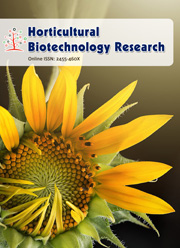Lignin Database for Diversity of Lignin Degrading Microbial Enzymes (LD2L)
Keywords:
Lignin degrading microbes, Lignin, Lignin degrading enzymes, BiofuelAbstract
Lignin is the second most abundant constituent of the plants cell wall, where it protects cellulose against hydrolytic attack by saprophytic and pathogenic microbes. Lignin degradation plays a major role in the carbon recycling in the ecosystem as well as convert plant biomass for second generation biofuel (ethanol) production. This environmentally recalcitrant organic material has been degraded by different microorganisms like, Bacteria, Fungi and Actinomycetes and they are capable in producing various degrading enzymes such as, Aryl oxidase, β-Glucosidse, Cellulase, Endoglucanase, Glycerol oxidase, Hemicellulase, Lignin peroxidase (LiP), Laccase, Manganese peroxidase, Oxylate decarboxylase and Xylanase. But the degradation process is controversial against different lignin due to its complex structure and bonding to carbohydrate complexes. In view of this in this study an attempt was made to develop lignin degrading microbial enzymes database which gives on overall information about the diversity of lignin degrading enzymes of reported microbes. This database is made available through official Web server http://bioresearch.hostingsiteforfree.com for common use by the science community.Downloads
Download data is not yet available.
Published
12-02-2014
How to Cite
NAGARAJAN, A., PONNUSAMY, M., & Palaniswamy, K. (2014). Lignin Database for Diversity of Lignin Degrading Microbial Enzymes (LD2L). Research in Biotechnology, 5(1). Retrieved from https://updatepublishing.com/journal/index.php/rib/article/view/2448
Issue
Section
Research Articles



 .
.